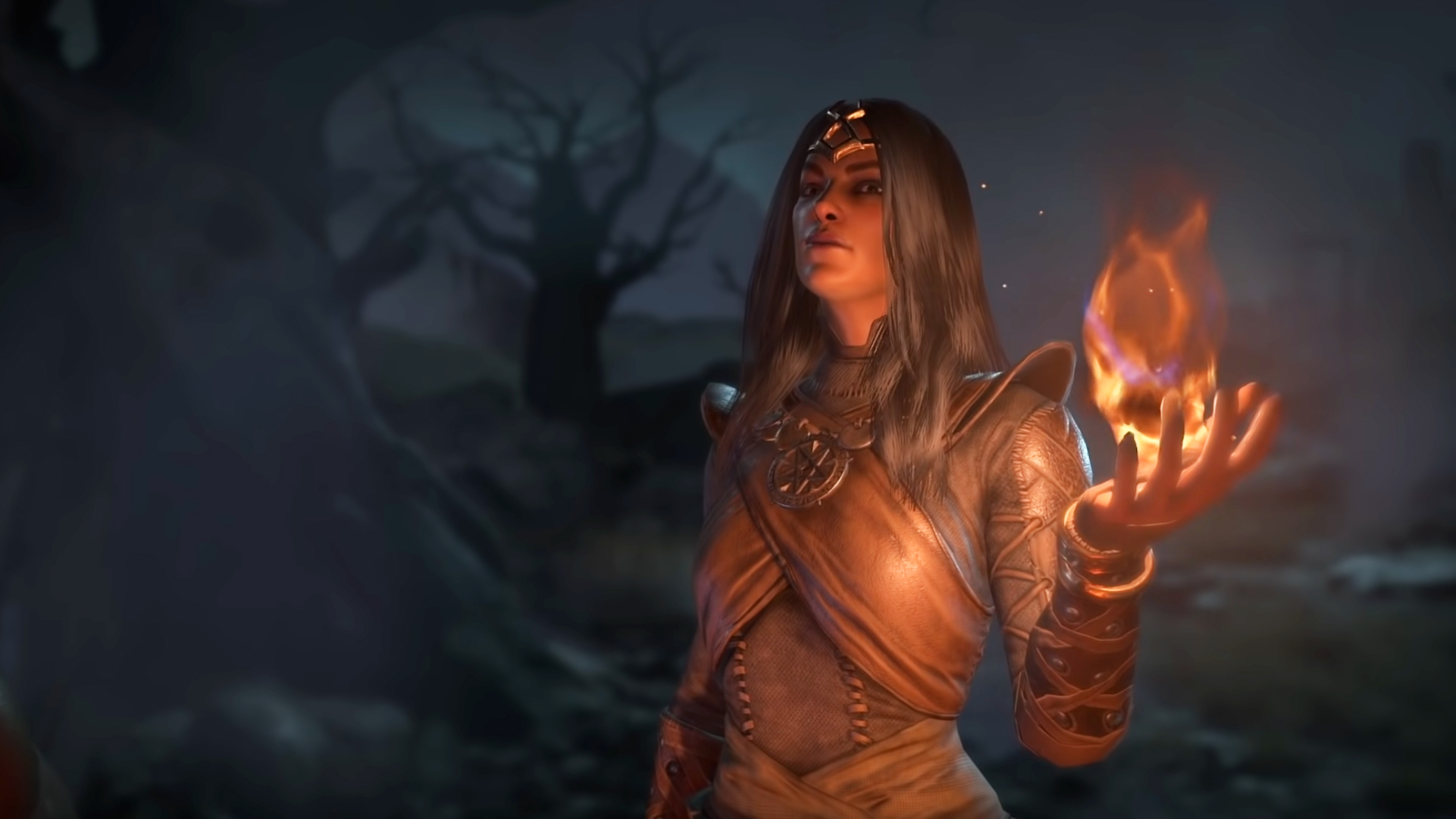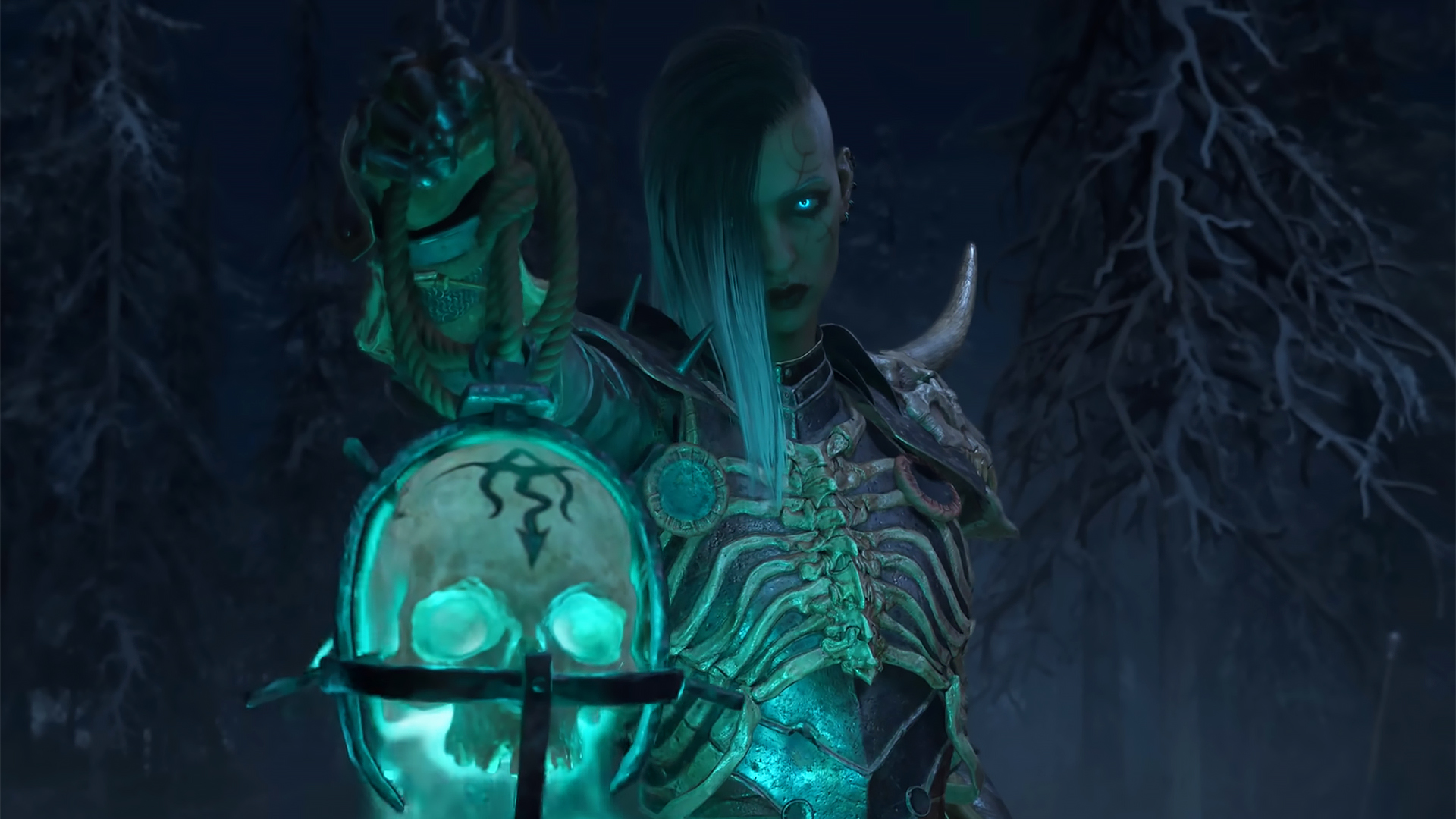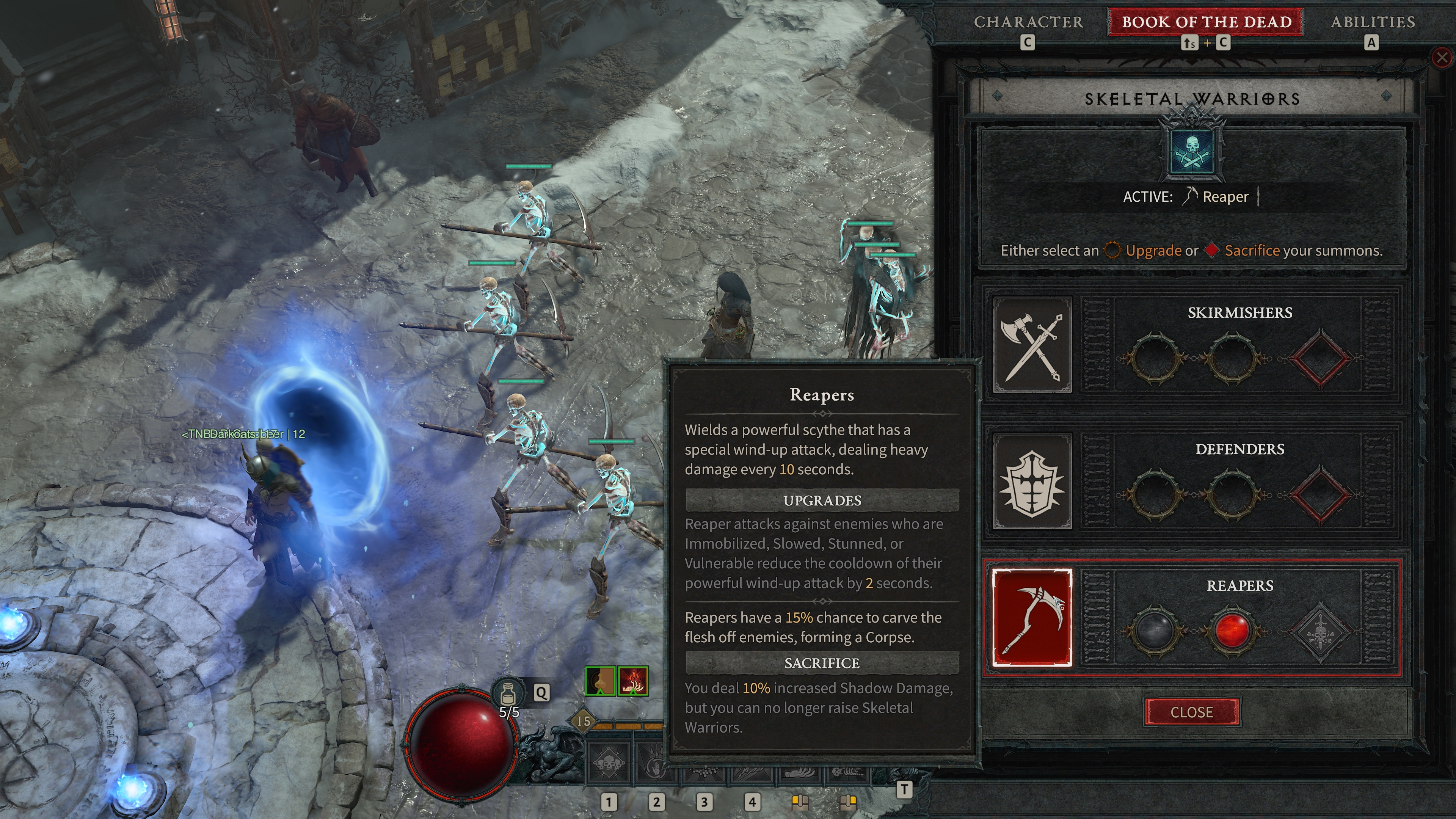
Each of the Diablo 4 classes have a unique class mechanic that unlocks after leveling up a bit. The class mechanics help shape how you'll tear your way through Sanctuary. Sorcerers can equip spells as passive bonuses, Barbarians can wield several wepaons at once, and Necromancers can alter their undead summons.
Familiarizing yourself with each unique system can also help you decide which class to play. Creative players might gravitate toward the Sorceress' enchantment class mechanic for passive buffs and attacks, or Barbarian fans that hunger for maximum damage might like tying various weapons to attacks using their arsenal system. Each unique mechanic widens the build possibilities on top of the game's skill tree, which might even lure you to a class you'd usually ignore.
The Diablo 4 beta will be the first time to play with each class mechanic and see how malleable they can be. Here's how each class mechanic works in the Diablo 4 beta. Once the Necromancer becomes playable in the open beta, I'll update this guide.
Diablo 4 classes
Diablo 4 Barbarian

Barbarian
Type: Melee
Class mechanic requirement: Level 5
When a Barbarian opens their trench coat (of the bear), an entire battalion's worth of weapons fall out. Barbarians wouldn't make it near security at an airport, let alone through it. These warriors studied way more than the blade, and in Diablo 4, they can equip four weapons at the same time. With their arsenal class mechanic they can assign each weapon to different skills for unique bonuses.
The Barbarian's four weapon slots look like this:
- Two-hand bludgeoning weapon
- Two-hand slashing weapon
- Main hand (dual-wielded)
- Off-hand (dual-wielded)
Each weapon type, or expertise, gives you a passive bonus when you assign it to a skill with the Barbarian's arsenal system. The bonuses include things like increased critical strike chance to injured enemies and a percent chance to gain fury (the Barbarian's resource) when hitting crowd-controlled enemies. You can level these bonuses up from rank 1 to rank 10 by killing demons with them, and you get a second bonus once you've maxed it out.
Keep up to date with the most important stories and the best deals, as picked by the PC Gamer team.
Each skill will scale off the damage of the weapon assigned to it. If you attach your main hand weapon to Whirlwind, for example, it will use that weapon's damage stat and ignore the damage of your other three weapons. Any other weapon stats outside of damage are always active, which means Barbarians will be able to utilize the stats of four legendaries at once in the full game. While leveling, you should probably assign skills to whichever weapon does the most damage, rather than its unique bonus. Bonuses and legendary affixes will surely alter this strategy once the final game is out.
Barbarians have an additional class mechanic called the "technique slot," but it's not available in the beta.
Diablo 4 Sorcerer

Sorcerer
Type: Ranged
Class mechanic requirement: Level 15
Diablo 4's Sorcerers like to make use of the whole skill, from skin to bone. They can transform a skill that simply deals magical damage into something entirely different. With the enchantment class mechanic, the Blizzard spell can go from an AoE ability to a passive attack that occasionally spawns on top of you. When a Sorcerer walks into a room, it's clear how desperately they want you to see that they know magic.
The Sorcerer's enchantment system lets you assign skills to enchantment slots for unique effects, but you can still use the skill—and all of its skill tree upgrades—normally, too. You can also swap out your enchantment slot skills whenever you want.
Here's some examples of enchantment slot bonuses:
- Arc Lash: Whenever you are hit, there's a 20% chance the attacker is stunned for 1 second.
- Meteor: Every time an enemy takes burning damage, there's a 3% chance a Meteor falls on them.
- Blizzard: Every 15 seconds, a Blizzard forms over you and follows you for 4 seconds.
- Teleport: Evade is replaced with Teleport on a 17 second cooldown.
Ice Armor is a good example of how the Sorcerer's enchantment slot can become the core of your build. Normally, Ice Armor gives you a barrier for 6 seconds that absorbs 30% of your base life and 10% of your Cold Damage stat in damage. With a few points in your skill tree, Ice Armor instead increases you mana regeneration by 25%. On top of that, you can pick up the Shimmering upgrade to cause enemies that hit your Ice Armor to have a 15% chance to be frozen for 3 seconds. Lastly, the enchantment slot for Ice Armor grants you a 5% chance when hit by enemies to gain the effects of the skill.
With an upgraded Ice Armor and its enchantment slot bonus, you can make a Sorcerer who jumps into the middle of a demon horde, turns them into ice, and shatters them while taking almost no damage. The most creative Sorcerers can build their spellbook around the types of enemies they plan to kill.
Diablo 4 Rogue

Rogue
Type: Melee/Ranged
Class mechanic requirement: Level 15
Rogues may look simple compared to Diablo 4's other classes, but they thrive on having distinct goals when it comes to combat. Rogues know exactly where and how to strike enemies to deal the most damage, which makes their specialization class mechanic extremely adaptable based on whether you're fighting big groups or individual monsters.
Their specialization abilities look like this:
- Combo points (level 15): Your basic skills now generate combo points. Certain skills consume combo points for additional effects.
- Inner Sight (level 20): Attack marked enemies to fill up your Inner Sight gauge. When it's full, gain unlimited energy for 4 seconds.
- Preparation (level 30): Not available in the beta.
The Inner Sight specialization is self-evident, but the combo points affect each skill differently. Barrage usually sends a wave of five arrows out from your character. If you use Barrage with combo points, the damage and amount of arrows you send out will increase. Twisting Blades impales enemies dealing loads of damage and makes them vulnerable for follow-up attacks. If you use Twisting Blades with combo points it not only increases the damage but also gives you a movement speed bonus.
Diablo 4 Druid

Druid
Type: Melee/Ranged
Class mechanic requirement: Level 15
If you want to do a little bit of everything, pick a Druid. Diablo 4's Druids can shapeshift into animals for melee attacks or cast spells that poison and electrify enemies. This class gives you the tools to change roles, from a tanky bear to a devastating magic caster. Their class mechanic hasn't been fully revealed yet, but a recent developer stream provided the structure for it.
Druids can visit Scosglen in the Fractured Peaks to meet up with four spirit animals. Each animal (unlocked at different levels) will accept boons that you collect off of demons as unique loot. Druids can offer boons to one of the spirits early on to gain their bonuses, but you can eventually swap to other animals whenever you'd like. Once you've unlocked all of the spirit animals, you'll be able to use a bonus from each of them with a fifth, extra bonus from whichever animal you prefer.
The Druid class mechanic isn't available in the Diablo 4 open beta.
Necromancer class

Necromancer
Type: Ranged
Class mechanic requirement: Unconfirmed
Necromancers are Diablo 4's version of a Pokémon trainer except the Pokémon are skeletons and other undead horrors. Apart from being a goth version of Sorcerers, Necromancers will do anything for their skeletal comrades. The Book of the Dead, their class mechanic, allows you to take the three basic minion types and specialize your summons within them. Or, if you want, you can sacrifice your minions to gain powerful bonuses instead.
Necromancers have three types of minions:
- Skeletal warriors
- Skeleton mages
- Golems
Inside The Book of the Dead window, you can assign upgrades to each type of minion, or assign a sacrifice bonus.
I haven't unlocked every section of The Book of the Dead yet, but will update this guide once I do.
Skeletal warriors upgrades:



Skeletal mages upgrades:

The collective PC Gamer editorial team worked together to write this article. PC Gamer is the global authority on PC games—starting in 1993 with the magazine, and then in 2010 with this website you're currently reading. We have writers across the US, UK and Australia, who you can read about here.


